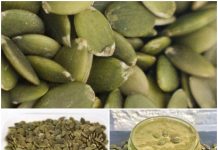5. Clean Kid Stuff
To clean hard, non-permeable things like plastic toys, dishes, sippy cups, therapeutic rings, and so forth first wash the things with cleanser and water and flush, at that point absorb them an answer of 2 teaspoons of fade for each gallon of water for in any event 2 minutes. Following two minutes, channel the water and let the things air dry or in the event that you truly need to sterilize stuff and not simply disinfect it.
On the off chance that your child’s squishy toys can go in the clothing, hurl it in there with their sheets and covers (see #8 beneath for explicit clothing tips). On the off chance that they’re not launderable, get the soft toys far from everybody for in any event 3 days to let the infections superficially bite the dust.
6. Purify The Bathrooms
Unquestionably ensure you wipe down the entirety of the hard surfaces in the bathroom with a disinfectant spray or disinfectant wipe. Or on the other hand, you can make your own disinfectant solution with 1/2 cup of dye for each gallon of water. Apply the disinfectant answer for the surface and let it represent in any event five minutes, then rinse completely and air dry.
Additionally, don’t share hand towels with the wiped out individual. Give the affected person their own hand towel, or have them utilize expendable paper towels to dry their hands until they’re never again wiped out.
Make certain to wash any restroom things that have contacted your face or mouth, similar to cosmetics brushes and toothbrushes.
7. Keep The Bedrooms Germ-Free
ْْWhen you’re at last beginning to feel much improved, you can take the entirety of your bedding and hurl it in the clothing to get it truly perfect (see #8 beneath for explicit clothing tips). In the meantime, double up your pillowcases and fitted sheets to help ingest any additional perspiration before it hits your pad or sleeping pad. (If you need an incredible tip on cleaning and refreshing a sleeping pad, look at this article.)
Ensure there’s a waste bushel in the rooms to get each one of those pre-owned tissues and wipes, and put a plastic sack in the waste container before discarding anything. That way you can without much of a stretch change out the sack and get those germs out of your home and into the waste.
If somebody spews into a waste crate, you can sanitize it with a similar 1/2 cup of dye for each gallon of water solution that you’d use in the bathrooms.
8. Take Care When Doing Laundry
Washing towels, sheets, and other sheet material in the clothing is an extraordinary method to get it clean, yet don’t let yourself get those germs as you’re doing clothing! Try not to “embrace” messy clothing to your body while conveying it; utilize a bushel or hamper to take it to the pantry, and make certain to wash your hands after you load the washer.
While doing clothing after influenza, wash everything on the most sweltering setting (or a “sterilize” setting if your machine has one) and ensure you incorporate dye or shading safe fade in each heap to dispose of those germs. Of your machine (standard or HE) has a detergent allocator, simply fill it to the MAX line and you’re all set. Of there’s no sanitizer container, include 2/3 cup of blanch for a customary machine or 1/3 cup dye for a HE machine to the wash water as the cycle is running.
And wash pillows in your washing machine to get those clean alongside your pillowcases.
After all the laundry is done and this season’s cold virus is on out, ensure you wash your washing machine as well. You’ll need to sterilize it with a wipe to ensure it’s not harboring any germs.
9. Wash Your Hands
Keeping your hands clean is similarly as important as keeping your home clean, especially during flu season. Be certain you wash with warm water and cleanser for at any rate 30 seconds (you can sing “Column Row Your Boat” twice) in the wake of using the bathroom, before eating, before contacting your nose, mouth, or eyes, subsequent to being outside, and in the wake of being in contact with a wiped out individual.









